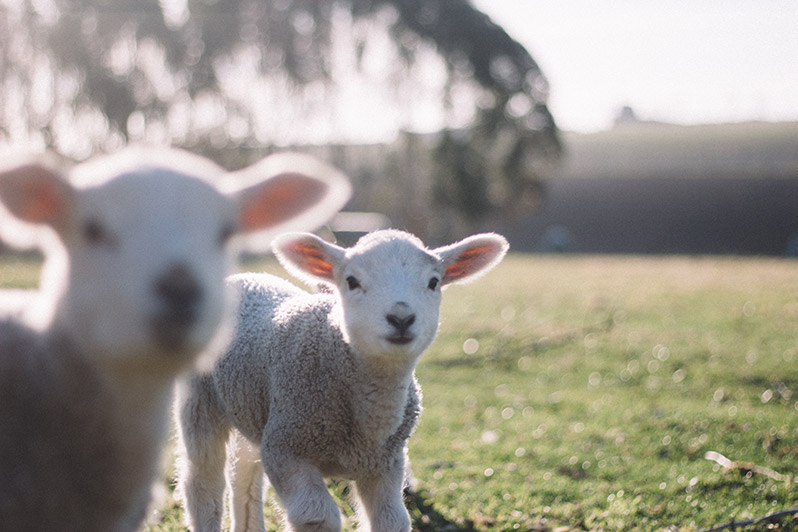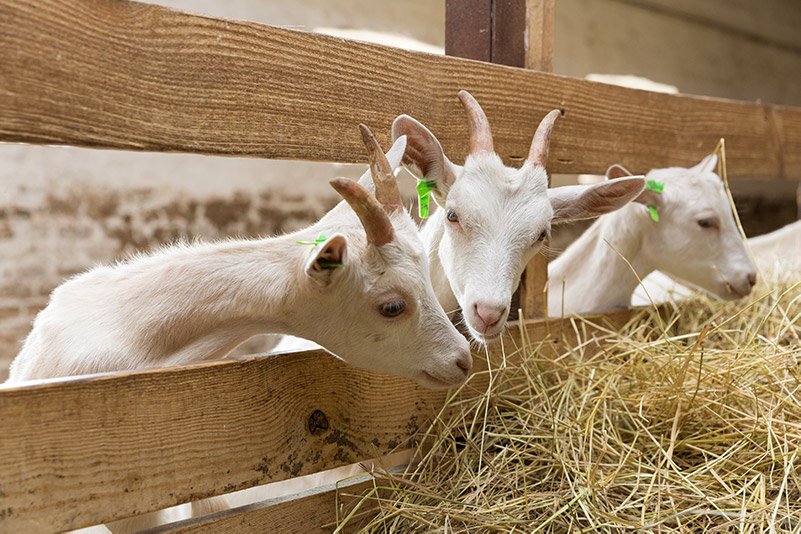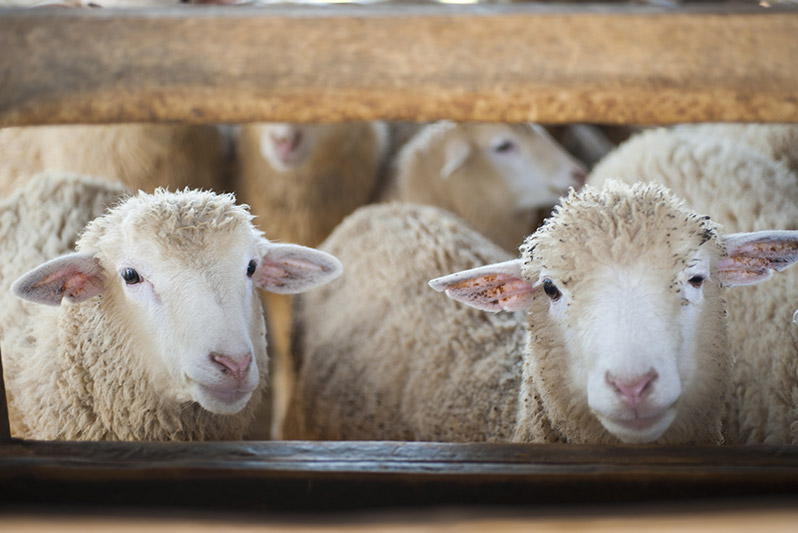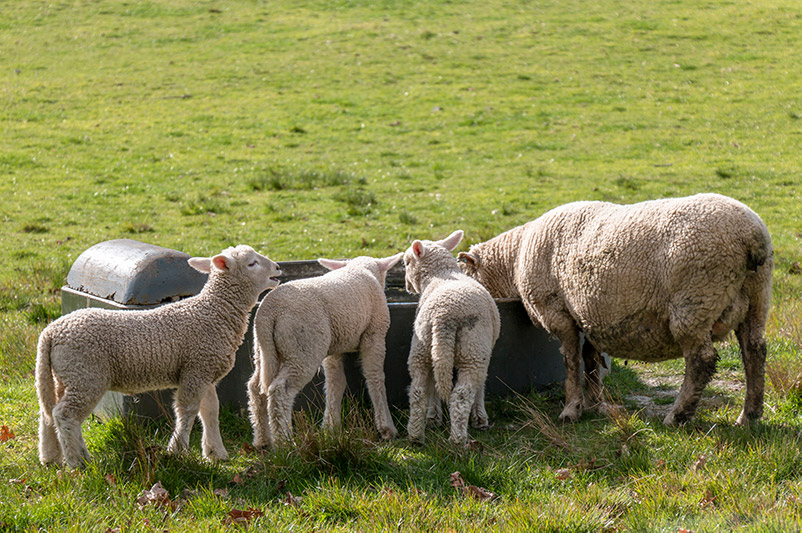Kid & Lamb Management
Page 06 /
The level of mortality newborn kids and lambs can be quite high compared to other species. There are some estimates between 12 to 37% of kids and over 15% of lambs3 do not survive to adulthood. Evaluating different areas of neonatal management are key to improving health and preventing mortality wherever possible.
In this FAAST Review, we will discuss challenges surrounding:
- Late gestation management and maternal underfeeding
- Parturition
- Hypothermia
- Mismothering
- Colostrum management
- Housing and feeding equipment
Late Gestation Management
The management of the doe or ewe in late gestation is critical in preventing challenges from occurring at or shortly after birth.
Nutrition
Specifically, nutrition provided in the last trimester can help to increase the viability of the newborn lamb or kid. Underfeeding pregnant does and ewes can have detrimental effects on newborns as it can impair or reduce:
- Placental size and attachments
- Fetal growth
- Deposition of fetal fat reserves
- Maternal udder development
All of these issues can lead to newborn lambs and kids that have increased difficulty in producing heat, leading to hypothermia. They can also contribute to insufficient immune system development and responsiveness, leading to an increased risk of infections
Energy Demands in Late Gestation
To prevent problems from occurring , it is important to increase energy and protein to ewes and does in the last 4-6 weeks of pregnancy, particularly to those that are carrying multiple fetuses, have a low body condition score, or are lambing/kidding for the first time. Doing so will help to improve the health of the newborn and can aid in preventing metabolic disorders, such as pregnancy toxemia (where the growing uterus can reduce rumen capacity, or room for the ewe/doe to expand her stomach when she eats, which will impact the amount of energy she gets from her diet to facilitate proper bodily functions in the ewe/doe, as well as maintain fetal growth and development).
Don’t Forget Your Supplements
Balancing minerals and vitamins in late pregnancy is also an important consideration as well.
Work with your veterinarian and nutritionist to develop a nutritional program based on your herd or flock’s needs
Vaccination
In late gestation, it is recommended to vaccinate against certain diseases to ensure specific antibodies are deposited in colostrum to benefit and protect the newborn lamb or kid while its immune system is still developing. Specifically, enterotoxaemia or pulpy kidney disease, caused by a type of bacteria (Clostridium perfringens type D) can be vaccinated against, where the vaccine is given 2-4 weeks prior to parturition. This practice, combined with excellent colostrum and feeding management, can help prevent this disease from occurring.
Lambing and Kidding
The period of time surrounding lambing and kidding (parturition) is critical to the future success of lambs and kids. Specifically, dystocia, or a difficult delivery, is a key factor to try to prevent or better manage for reduced mortality rates.
Dystocia can lead to:
- Hypoxemia
- Difficulty getting oxygen which can lead to brain damage and an inability to generate heat
- Impaired heat production
- Trauma
Typically dystocia is caused by an abnormal positioning of the fetus, where the feet or legs are back. Proper monitoring of the progression of lambing and kidding is critical in preventing some of the consequences to dystocia. Progress should occur every 30 minutes, and if no progression is occurring, an intervention should be applied.
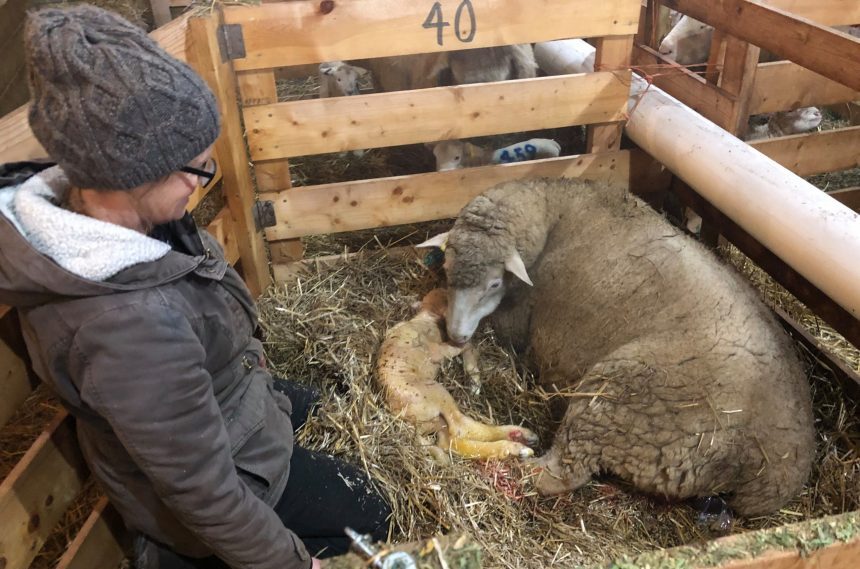
Source: 650 CKOM
Work with your veterinarian to develop an intervention strategy for your farm for safe and effective delivery to ensure the health and vigour of both lamb/kid and dam
Some dystocia events can also be prevented through providing proper nutrition in late pregnancy. Specifically, preventing over-conditioning will help to increase the area available in the birth canal so there is not an accumulation of fat reducing its diameter.
Check for multiples! If pregnancy ultrasounds were not performed to identify if there singles or multiples are present, be sure to ensure that all have been delivered while intervening.
Hypothermia (Chilling) and Hypoglycemia (Low Blood Sugar)
One of the biggest reasons for mortality, especially in the winter and early spring, is hypothermia. One of the main ways to prevent lambs/kids from succumbing to hypothermia is to identify them early. The best way to recognize hypothermia and hypoglycemia is by taking the lamb/kid’s rectal temperature and observing its behaviour. The main clinical signs that could be seen range from weakness to an inability to stand or recumbency. Lambs/kids over 5 hours old should be considered hypoglycemic as well as hypothermic. Do not warm before administering colostrum or glucose (energy source).
OMAFRA and Ontario Goat have developed fact sheets on dealing with hypothermia and hypoglycemia in young animals:
Hypothermia poster Oct10_2013_RevNov17_2022hypothermia-poster-final-approved
Work with your veterinarian to help in developing a protocol for dealing with hypothermia and hypoglycemia on your farm
Hypothermia and hypoglycemia can be prevented through:
- Proper nutrition in late gestation
- Prevention of dystocia
- Ensuring a warm, dry and draft-free environment after birth
- Preventing a lack of maternal bonding
Maternal & Neonate Bonding
It’s important to establish a maternal bond to prevent hypothermia/hypoglycemia, inadequate nutrition, and failure of colostrum ingestion. To establish this maternal bond, place the dam and offspring together at the place of birth for at least one hour. If the bond fails to form, it is best to foster the newborn to ensure proper nutrition through the use of bottles.
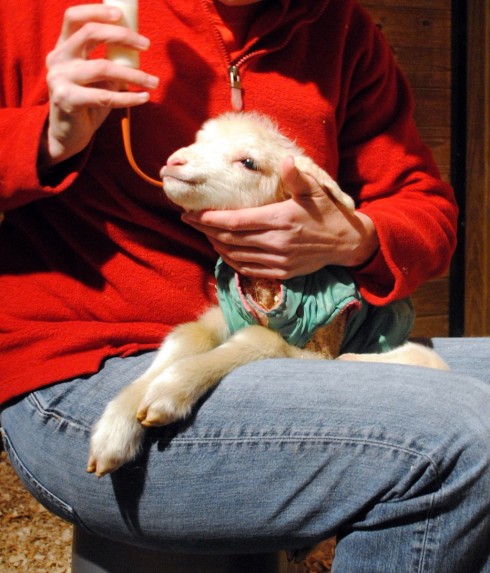
Source: Wright’s Feeds
Colostrum Management
Similar to other species, colostrum is essential for newborn lambs and kids. Kids and lambs rely on the absorption of immunoglobulins from colostrum from the dam to protect them against disease early in their lives while their own immune systems are still developing. Colostrum also contains high levels of energy (in the form of fat and glucose) that can help prevent hypothermia/hypoglycemia very early in life. To ensure an ample amount of colostrum intake for meat lambs and kids, monitor the udder of the dam — a slack udder will indicate colostrum consumption. If unsure, or if lambs or kids are slow or weak, hand feed the colostrum using a bottle or esophageal tube.
For lambs and kids raised from dairy ewes/does, hand feeding colostrum is necessary. Ensure that 50 mL/kg of colostrum is consumed soon after birth (ideally within the first hour of life) and 200 mL/kg is consumed across three feedings within the first 24 hours of life. Feeding this quantity of colostrum will help to protect against disease and provide additional calories to stay warm, especially in the winter.
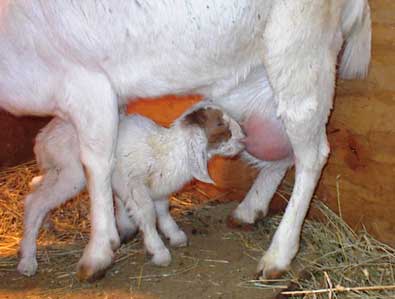
Source: The Kebun
Housing and Feeding Equipment Cleanliness
Cleanliness is a critical component of newborn kid and lamb management. They are very susceptible to infections in early life, which is why it is critical that management practices are in place to minimize contact with bacterial and other pathogens to prevent future disease. There are several key areas to focus on to minimize contamination:
Housing
- Kidding or lambing environment: This is the first area that kids and lambs come into contact with. Ensuring that the area is clean, free of manure, and well bedded can go a long way to help mitigate the entry of bacteria or other pathogens by mouth or via the umbilicus
- Housing after birth: Whether the kids or lambs are housed with their dam on pasture or indoors in a group pen, it is important to ensure that the pen is as clean as possible to prevent ingestion which may cause diarrhea caused by various bacteria, viruses and/or parasites
Feeding equipment
- More a factor for dairy lambs and kids; feeding equipment (bottles, pails, buckets, and tubs) can be a significant source of bacterial contamination. Ensure that they are cleaned well which means:
- Initial rinse with warm water
- Soak in hot water with detergent
- Scrub with soap and brush
- Rinse with hot water
- Let dry
Ventilation
- For animals moved to group pens after separation from the dam, ensure an appropriate stocking density to help keep ammonia odours low and air fresh. Ensure ventilation systems are adequate for the size of barn to maintain a continuous flow of fresh air to reduce the spread of respiratory pathogens
Take Home Messages
- Management of kids and lambs starts before they are born by providing pregnant animals with a well-balanced ration with ample energy, protein, and minerals
- When lambing/kidding occurs, it is important to intervene appropriately to prevent the consequences that can occur due to dystocia
- Following birth, ensuring that colostrum is consumed soon after in sufficient quantity, and preventing the development of hypothermia/hypoglycemia will lead to a healthy kid or lamb
- Work with your veterinarian and other advisors to ensure the management of your newborns will set them up for success
References
- Henderson, D. 2002. The veterinary book for sheep farmers.
- Mellor and Stafford. 2004. Animal welfare implications of neonatal mortality and morbidity in farm animals. Vet J. 168:118-133.
- Dwyer, C.M., J.Conington, F. Corbiere, I.H. Holmoy, K. Muri, R. Nowak, J. Rooke, J. Vipond, and J.M. Cautier. 2016. Invited review: Improving neonatal survival in small ruminants: science into practice. Animal. 10:449-459.
